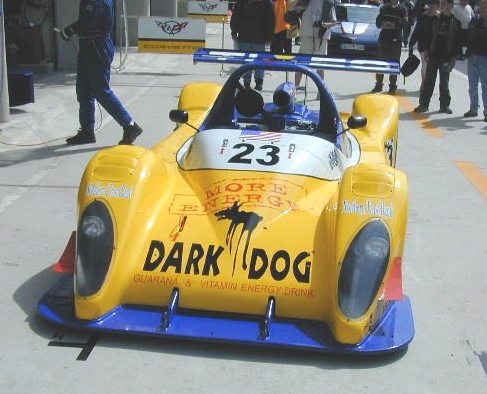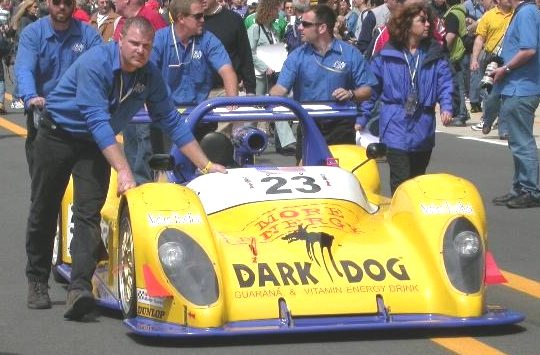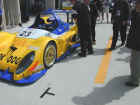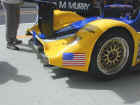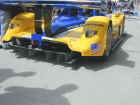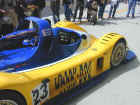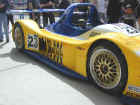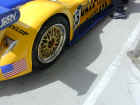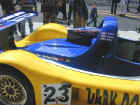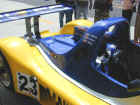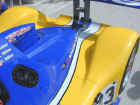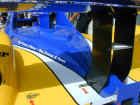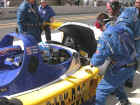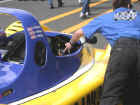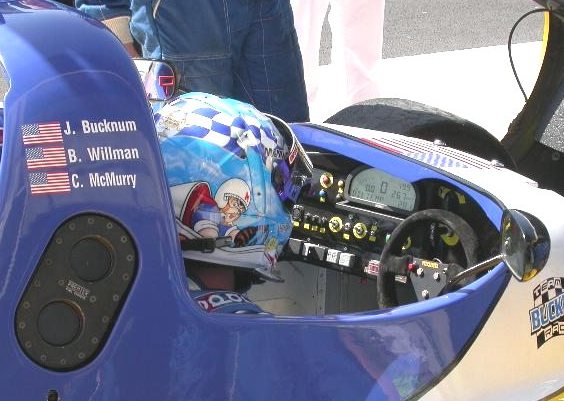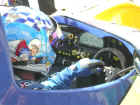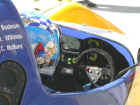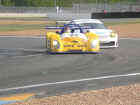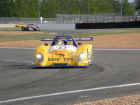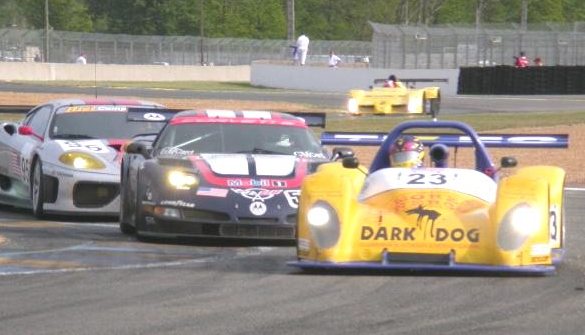|
Jeff Bucknum has been involved in racing almost since the day he was born. His father Ronnie raced successfully in the 1960s in Indy cars, as the first Formula One driver for Honda, and in sports car racing with Roger Penske, with a win at the 12 Hours of Sebring plus a third place finish at the 24 Hours of Le Mans.
The younger Bucknum started in karts and won many races and championships. In 1992 Jeff went through the Skip Barber Racing School, and went on to win his first two Skip Barber Formula Ford races in 1993. He finished a close second in the 1994 Skip Barber Championship, with multiple wins and podium finishes. Later that year, Jeff was selected as one of ten drivers in the United States to compete in the Barber Dodge Big Scholarship Shoot-Out, of which he was runner-up.
Jeff made his pro racing debut in the Barber Dodge Pro Series at Phoenix International Raceway. He qualified on the front row and finished a solid third place. In just his seventh start of the Barber Dodge Pro Series, Jeff was victorious at Mid-Ohio, the same track where his father won in the Sunoco Chevrolet Camaro 28 years earlier.
Between the 1995 and 1996 seasons, Jeff was hired to test over 1500 miles in an Indy Lights car for Superior Performance Racing, in preparation for the 1996 Indy Lights season. Without adequate sponsorship for Indy Lights, Jeff raced a second year in the Barber Dodge Pro Series, where he won the season finale at Lime Rock.
In 1998 Jeff was asked by Worldspeed Motor Sports to drive in the Star Mazda Pro Series were he picked up eight podium finishes, including one win, and placed third overall in the championship. Then returning for a second year in 1999, Jeff finished on the podium 12 times, with two wins, and second in the championship.
From 1999-2001, Jeff focused his energies on launching Team Bucknum Racing, the most successful Star Mazda Series team during the last two years, and served as the team's test driver.
In January 2001, Jeff was invited to race the 24 Hours of Daytona for TRP Racing in an SRII Lola Nissan. Although he had never raced at Daytona or been in a SRII car before, Jeff was able to set the fastest lap times in class during each practice session. Although Jeff's race lasted only six of the 24 hours, he drove the first two hours after qualifying the car, led the race in class, and set the fastest race lap.
In 2002, Jeff returned to a full-time seat in his team's LMP 675 entry in the American Le Mans Series where he finished 3rd in the drivers points championship and won three times with co-drivers Chris McMurry and Bryan Willman at Mid-Ohio, Trois-Rivieres and Mosport.
Unlike many drivers whose racing careers start at an early age, Chris didn't get involved in racing until 1999 at the age of 34 years. That year he set foot in a race car for the first time, jumping right into Formula Mazda racing where he progressed remarkably quickly. After four SCCA events, he moved into the Star Mazda Series at the end of his first year. In his very first pro race, he picked up 13 positions, more than any driver except one.
|
Prior to the start of the 2000 season, Chris tested with the Mazda Factory Team and aligned with Team Bucknum Racing's Star Mazda Series effort, with his sights set on finishing in the top ten in points.
That target he achieved, finishing sixth in points in both the Red Line Oil Oval Championship and Star Mazda Western Series Championship, and 10th in points in the Star Mazda Best Western Championship.
Mid-season Chris reeled off three fourth place finishes during a four-race segment of the schedule. He narrowly missed his first pro podium finish at oval track Mesa-Marin Raceway in Bakersfield, CA, ending up less than a car length behind teammate and Team KOOL Green Academy graduate Brian Selby.
Chris competed in the first-half of the Star Mazda North American Championship in 2001, but cut that season short after signing with Team Bucknum to become the team's first LMP 675 driver. The remainder of the year was spent on testing and development for the team's first full season, 2002, in the American Le Mans Series.
This past year Chris won a LMP 675 class-best three races (Mid-Ohio, Trois-Rivieres and Mosport), and scored a second place finish at Washington, D.C. in route to finishing fourth in the drivers championship.
When not racing, Chris is chief executive officer of McMurry (www.mcmurry.com), a marketing communications firm that includes one of the largest custom publishing businesses in the U.S., as well as one of the largest advertising agencies in Arizona. He is on the board of directors of Theresa's Fund, a charity established to prevent domestic violence, the Custom Publishing Council, and the High Altitude Sports Training Complex at Northern Arizona University. He is often spotted at Phoenix-area karting tracks where he hones his skill with coach Alan Rudolph, the top karter in the U.S. in 2000.
Bryan Willman started racing in 1993 and has logged more than 125 races since. He got his start in the Jim Russell Racing Series, then up to the sprint race format of the Star Mazda Series, where he still manages to compete in between American Le Mans Series practices and races.
Bryan is best noted for his consistency and ability to finish what he start, and adds that "after years of saying, 'I could win this race if only it went on long enough,'" is more than happy to be endurance racing.
Last year, in his first season of endurance racing in the American Le Mans Series, he won a class-best three times (Mid-Ohio, Trois-Rivieres and Mosport) and finished fifth in the drivers championship.
Between the 1999 and 2000 seasons, Willman partnered with his current co-driver Jeff Bucknum to form Lake-Havasu, Arizona-based Team Bucknum Racing. The team won four of the first six championships available to it in the Star Mazda Series in 2000 and 2001, and is a leading team in that league.
In the middle of 2001, in addition to driving in the Star Mazda Series, Bryan and Jeff decided to expand their racing enterprise to include sports car racing. The team purchased two Pilbeam MP 84 (now called an MP91) prototypes, one of which Bryan piloted in his sports car debut at the Petit Le Mans at Road Atlanta in October, 2002
|
